The selection of a protective surface must start with its purpose and end with the material that best suits the needs of the owner/operator, the child/user, and the caregivers. This is not a question of materials and sales pitches, but of a clear understanding on the part of the owners as to what they are asking the surface to do and how that will fit with laws, regulations, and standards. There must also be the development of the budget for initial installation and the maintenance required for the functional longevity of the system. Once these performance and budget matters have been determined, sales persons have been interviewed, sales pitches read, and warranties reviewed, it must be clearly understood that sales presentations are sugar-coated, positive pictures of the products. It is the owners’ stewardship of the tax dollars entrusted to them that makes them determine the pros and cons of each surfacing type being offered.
A Bit of History
In 1974, a consumer petitioned the newly formed U.S. Consumer Product Safety Commission (CPSC) to take on the challenge of reducing the frequency and severity of injuries on playgrounds. Falls to the surface were found to be the highest percentage of the injuries back then (59%) as they are today (79%), and the cost of playground injuries has risen to $11.7 billion annually. This is important, as it is not why the child falls, although that might lead to a product recall by the CPSC, but what the child lands on and the severity of the injury sustained. The opportunity to fall is based on the quality and design of the play structure with some offering greater or lesser challenge to the child, the height that the structure manufacturer is allowing the child to climb to, and how the child uses the playspace based on “reasonable foreseeable misuse.”
Society, or its surrogate, in this case the CPSC and later ASTM International (ASTM), established at the time what the acceptable level of injury was. For playgrounds, the CPSC set the limit as life-threatening, which has been adopted and perpetuated by ASTM and other standards-writing bodies, and this quite bluntly says that the goal is to avoid having a child die. Later, the prevention of the debilitating injury was added, so now we are leaving the child with an injury that has a legacy greater than one month after the injury occurs and likely could affect him for the rest of his life. So long as it is not your child suffering this level of injury, just meeting the standards might be OK.
The new problem is that in 2008 Congress passed the Consumer Product Safety Improvement Act (CPSIA), which requires that serious injuries rated with an Abbreviated Injury Score (AIS) >3 must be prevented in all consumer products. Since playgrounds are specifically marketed to children under 12, they are consumer products and are subject to the CPSIA. This threshold is significantly more stringent than that of ASTM F1487. This level of injury prevention is at the time of installation and over the life of the playground of 15-20 years.
Accessibility came into view
Although access for persons with disabilities to the built environment has been the subject of public interest for years, in 1990 this was formally recognized with the signing of the Americans with Disabilities Act (ADA) by President George H. W. Bush. This law has evolved through rule making and standards to provide specific requirements for recreation facilities, and playgrounds have for a long time been part of these regulations. The current Department of Justice (DOJ) 2010 ADA Standards for Accessible Design will be the governing document for playgrounds and particularly the ground level playground surface. The owner of every playground is required to meet the minimum requirements of this Standard at the time of installation, and “ground surfaces must be inspected and maintained regularly to ensure compliance with ASTM F1951.” Owners of playgrounds and surfaces in particular must know the entire document as it applies to the playground.
Specific regulations for playgrounds
First to consider is section 240 that determines differences between elevated and ground level play components and the minimum numbers of each required in the playground. Remember that for the elevated play components that go to the ground, a ground level accessible route will be required, with a clear ground space for transitioning back to a mobility device and back to the starting point on the structure. Then there is the need to provide the ground level accessible route from the outside of the playground to the start of the elevated play components and the required ground level play components. This ground level route must first and foremost be firm and stable according to section 302, and the required performance must be compliant in the field with ASTM F1951 as in 1008.206.1.
To ensure that the surface is not too firm and will not injure a falling child in the use zone, the surface must also comply in the field to ASTM F1292 as per 1008.206.2 and also as a precondition to compliance with ASTM F1951. Although the title of F1951 is “determination of accessible surface systems,” there are other significant requirements for the ground level accessible route that are equally important. First, it must be a minimum of 60” wide and have a running slope not exceeding 1:16 (6.25%), and the cross-slope across or within must not exceed 1:48 (2%). At the transfer to or from the structure or play component, there must be a clear space a minimum of 48” x 30”, having a slope not greater than 1:48 (2%) in all directions. Beyond these requirements, there must be no changes in vertical height greater than ½”, with the first ¼” being vertical and the second ¼” not exceeding a slope of 1:2; no holes that allow for the insertion of a ½” sphere or a gap greater than ½” around or ½” deep; and a carpet/turf pile that cannot be higher than ½”. Finally, all of these performance characteristics must be “inspected and maintained frequently.” The Merriam-Webster dictionary defines “frequently” as “frequent or short intervals.”

Early testing of injuries
First and foremost, the protective surface within the use zone is to protect children from injuries considering “reasonable foreseeable misuse,” so how does that get measured and what does it mean? Back in the 1950s and ’60s the safety concerns studied were pilots dying from ejecting from aircraft and family members dying or suffering severe head injuries from hitting the steel dashboard of cars and trucks that stopped abruptly. Experiments were performed on military personnel, sub-human primates, and cadavers, and later the automotive test dummies.
These studies measured deceleration as measured in g (units of gravity) and the duration of the impact. This was first graphically described as the Wayne State Tolerance Curve (WSTC) outlining the relationship between g and duration. The next stage was converting the WSTC to the Severity Index (SI) value which the Comsis Report shows that an SI of 1000 is the median value for survival in human-simulated automobile accidents. Next the SI was modified to Head Injury Criteria (HIC), and the pass/fail value was set at 1000. This has been demonstrated as an 18% risk of skull fracture and a 16% risk of AIS >4 (severe, life-threatening with survival probable) head injury. These same studies also concluded that an impact of 200g was a 10% risk of skull fracture.
The military and automotive studies required a high level of scientific sophistication and massive amounts of money. Playground surface testing is no different with the development of instrumentation that has been adopted in ASTM F355 and ASTM F1292 through long validation processes and comparisons to the original automotive Hybrid III headform. Meeting exacting electronic, mass, and dimensional requirements set out in the ASTM standards allows for comparisons to the military and automotive data. This assures the owner of the surface that the results from using the F1292 device are accurate and reproducible. This is critical to meeting Federal and State mandates and particularly important in litigation.
Practical examples of impact and outcomes
An Olympic boxer punches at 53g, while a head going through a windshield in a 25 mph frontal impact in a car is 100g on the victim’s head. Alternatively, the risk of a long-bone fracture begins at 100g, and risk is two times greater for values over 200g than when it is less than 150g. These values help an owner determine the injury outcome, and this can be compared to their acceptable injury threshold for the children in their community.
When a child falls from a play structure, this is free fall and totally governed by gravity. Because gravity is a constant and velocity can be calculated, we are able to determine how fast that child is travelling at the point of impact. A fall from a swing at 8’ above the ground has a velocity of 14.5 mph; from 11’, 18 mph; at 12’, 19 mph; and at 13’, 20 mph. Those thinking that children will have the ability to protect themselves when falling should think again. Knowing that an object free falls at 32 ft/sec and realizing how quickly they will reach the ground, it is not reasonable to believe they will be able to tuck and roll, put an arm out, or throw extra padding in the way. This is why it is so important to have extra padding on a surface demonstrating lower g and HIC values long before the child falls.
Surfacing testing
Typically, suppliers of surfacing must be able to provide critical height values through the performance of a three temperature test required in ASTM F1292. Remember that the critical height is the height at which the surface fails to provide values either below 200g or 1000 HIC, which results in a 10% risk of skull fracture and three times the risk of a long bone fracture on Gmax, and 20% risk of a skull fracture and 16% risk of a life-threatening head injury on HIC.
In some cases, such as with Engineered Wood Fiber (EWF) and loose rubber, the Gmax and HIC can be significantly lowered though the addition of depth of surface at relatively low cost. Most best practices recommend loose-fill materials be installed to a minimum of 12” and more like 15” to allow for disruption to provide g and HIC values well below the minimum values set in ASTM F1292. For synthetic surfaces, such as poured-in-place (PIP), mats, and synthetic turf, providing lower values requires significantly more depth as well as cost if the supplier even has the technology to provide a better surface. As a result, from the point of view of injury prevention, you have a choice between loose fill at a relatively low cost vs. a technology that has a high capital cost and likely a significantly higher risk of injury severity. This is of particular concern as more and more challenging play structures are introduced to allow children to reach greater heights and present more challenges, with failure resulting in a fall.
Loose fill and ADA requirements
Loose fill, EWF, and loose rubber appear to be the best solution until all of the requirements of the ADA are considered. These surfaces are not likely to comply at the time of installation, or shortly after installation, and owners fear that money will then be thrown at “frequent inspection and maintenance.” The good news is, that depending upon the design of the playspace and layout of the equipment, the minimum area of the playground that needs to meet the requirements of the ADA will be 18% to 22% of the playspace, leaving the balance to contend with injury prevention only. If the choice is EWF, the solution of maintenance reduction for EWF is installing it properly first by ensuring it meets the ASTM F2075 Standard and following the International Play Equipment Manufacturers Association (IPEMA) best practice for installation of EWF to meet ADA requirements at www.ipema.com/news_articles/11/EWF_Mmaint_Install_Position_Statement.pdf.
For loose rubber, it must comply with ASTM F3012, but realize that this Standard does not limit the exposed wire quantity, just the length of the wire, and does not require compliance with ASTM F1951 as a precondition to the Standard. The CPSC Public Playground Safety Handbook requires that recycled tire rubber is metal free in section 3.7. Therefore, specifications should also include that no exposed wire will be allowed in the material supplied. Loose rubber would also benefit from the use of wear mats to compensate for displacement. There is also the possibility to use bonded mats to a minimum of the 60” width of the accessible route to provide the accessible route through the loose fill and meet the ADA requirements.
Synthetic surfaces
Synthetic surfaces would be PIP, tiles, and turf, and each will have their issues with compliance to our two main goals. Due to the cost, suppliers regularly market and install their systems at impact values 10% less or very close to the minimum requirements of the ASTM F1292 (200g, 1000 HIC). They do not field test their installations to the ASTM F1292, saying that testing is costly and unnecessary, which is questionable when you consider these are the highest cost systems available and the most likely to fail as shown in a 2007 State of California study.
The ASTM F2479 outlines many of the factors that can cause failures in PIP and should be read by everyone considering a purchase. Additionally, most PIP uses aromatic MDI polyurethane binders that when exposed to UV light will lose flexibility, and the surface can fail F1292. It is for the high frequency of failure that the F2479 also recommends that owner/operators of this type of surfacing should be writing their own warranty for the length of time they expect the surface to last. This should include continued compliance to F1292 and the ADA. This is to avoid having a surface that fails the ADA not many years after installation, placing the children at risk of more than AIS >4. You do not need the supplier telling you that the warranty is over and you are on your own. There currently are suppliers stating a 10 year warranty only to stipulate that compliance to F1292 is limited to 3 years, effectively making it a 3-year warranty, while other suppliers provide prorated warranties that have little or no value. These are critical to the stewardship of taxpayer money.

Problems with synthetic surfacing
Although ASTM has no standard for tiles or synthetic turf in playgrounds, this does not mean they are without problems. Generally, they have the same problems with cost and compliance to ASTM F1292. These systems are often limited by their technology in meeting critical heights much above 11’. This is problematic when an owner wants to have better injury protection. Additional issues for tiles can be that they must only be installed on a bound hard base, such as concrete or asphalt, or weather and time can cause loose materials to gather around stations causing premature failures to F1292.
Submersion in water, due to lack of drainage or frozen ground in the spring, can affect the polyurethane binder, causing the tiles to curl or shrink. Shrinking is a big problem in that if the gap is larger than ½”, it fails the ADA, and if dirt fills the cracks and compacts, the surface also fails ASTM F1292 and the ADA. Depending upon the manufacture of the tile, there can be a number of problems, and they will be different for each manufacturer. It would be wise for the prospective buyer to visit older sites. Potential owners of tiles should also write their own warranty terms and conditions on failures that could occur over time.
Synthetic turf is relatively new to the playground scene, and the durability and impact attenuation issues are just starting to emerge. Many of these systems have foam systems as an impact-attenuating underlay and secondary attenuation with rubber infill in the upper layer. The problem is that foot traffic and scuffing will move the loose rubber, exposing more than ½” of carpet pile, failing the ADA. The loss of loose rubber causes a reduction of the resilience and potentially causes failing ASTM F1292 and the ADA again. Other problems will occur at the perimeter of the playground where the change in vertical height is greater than ¼”, as it is difficult to terminate the turf with that precision, again failing the ADA.

Surfacing solutions
Obviously, there is no perfect surface, but there are surfacing solutions based on judicious use of standards, asking the right questions, and writing a good specification, including regular testing and warranties. ASTM standards can be used to the advantage of the owner/operator in selecting surfaces that will meet their needs.
ASTM F1292 requires that all suppliers of playground surfacing shall provide a copy of the tests performed on nine surfacing samples that are “identical in design, materials, components, thickness and manufacture as the installed playground surface.” These tests are intended to determine the “critical height,” which is the height at which the surface fails the requirements of F1292. This typically means the traditional limits of 200g and 1000 HIC; however, section 4.4.3 allows for the owner/operator to specify lower values at the time of field testing, and this begins with setting the critical height of your choosing. It is very easy, if the testing is performed to the full ASTM F1292, to demonstrate the height at which a lower HIC value such as 700 was achieved. This is the first step in providing better protection for the children. The next step to providing ongoing protection for children is to require testing of the surface at the time of installation and annually during the warranty period and for the functional life of the playground. Section 14 of ASTM F2479 can be used to develop the terms that should be in every warranty.
Field testing procedures
To ensure continued compliance and the protection of children, field testing the installed surface with the device stipulated in the ASTM F1292 that is within the two year calibration period and following the exacting test procedure, including using only trained personnel, is necessary. Prior to specifying testing the field, it is time to take further advantage of the provisions of ASTM F1292. Sections 4.4.1 and 19.1.2 require that the owner/operator stipulate the drop height for field testing, and this can be any height as long as it is higher than the fall height in ASTM F1487. This allows the owner/operator to move the drop height from the deck or platform height to the tops of barriers and guardrails where children under “reasonable foreseeable misuse” will climb to and fall from. Once the drop height is selected, the owner/operator can again utilize section 4.4.3 and set lower values for the test results. These are the ultimate steps towards protecting children from the potential of death. The judicious use of the F1292 can get surfaces, whether EWF, loose rubber, PIP, tiles, or turf, to provide a Gmax below 100g and HIC below 500, which is the ASTM F1487 maximum value of impact to the head with a swing seat. Triax2015 has been developed to meet all field testing requirements
ADA compliance and safety considerations
Compliance to the ADA is a little more difficult for some surfaces, but again ASTM standards can come to the rescue. The first test for firmness and stability is the ASTM F1951. The standard requires that the sample tested first comply with F1292, and that standard requires materials to be identical to what is to be installed. This allows the owner to demand that the supplier provide the detail of the samples that were tested to both of the standards and how they were prepared. This should be included in the test report from the testing laboratory and forms the second part of a specification. Once the performance to ASTM F1951 is established, the surface must be installed exactly as specified, and the surface should then be tested using the Rotational Penetrometer to establish a base line for performance for firmness and stability. This will become important in ensuring the Department of Justice that the surface is being “frequently inspected and maintained to ASTM F1951.”
For the balance of the ADA compliance, some additional tools will be needed. First will be a straightedge that is exactly 60” to confirm the minimum width of the ground level accessible route. Coupled with a digital level, the running and cross slopes can be determined. There will then be the need to be able to measure the change in vertical height, the size of holes and gaps, and the pile height of carpet. Knowing what these measurements should be allows the owner to place compliance into the specification and the tools allowed for the testing, forcing suppliers to comply with the ADA. Triax2015 is designed for the inspector, to meet all ADA requirements. The State of California has published a Best Management Practice for Compliance with ADA in Playgrounds at www.calrecycle.ca.gov/Publications/Documents/1496/20141496.pdf.

Ultimately, this is not a choice of materials, but a determination of the requirements for the playground surface and the owner/operator writing a high quality specification and warranty, followed by field testing to confirm and ensure compliance. This may mean not paying a supplier until the surfacing is compliant, or asking them to repair surfaces that may not comply with warranty requirements. Triax2015 family of inspection tools is important in meeting compliance at this stage.
With this information in mind, the owner is now equipped to meet with surfacing sales representatives and select the surface that protects children, allows for the removal of architectural barriers, and meets both installation and maintenance budgets.


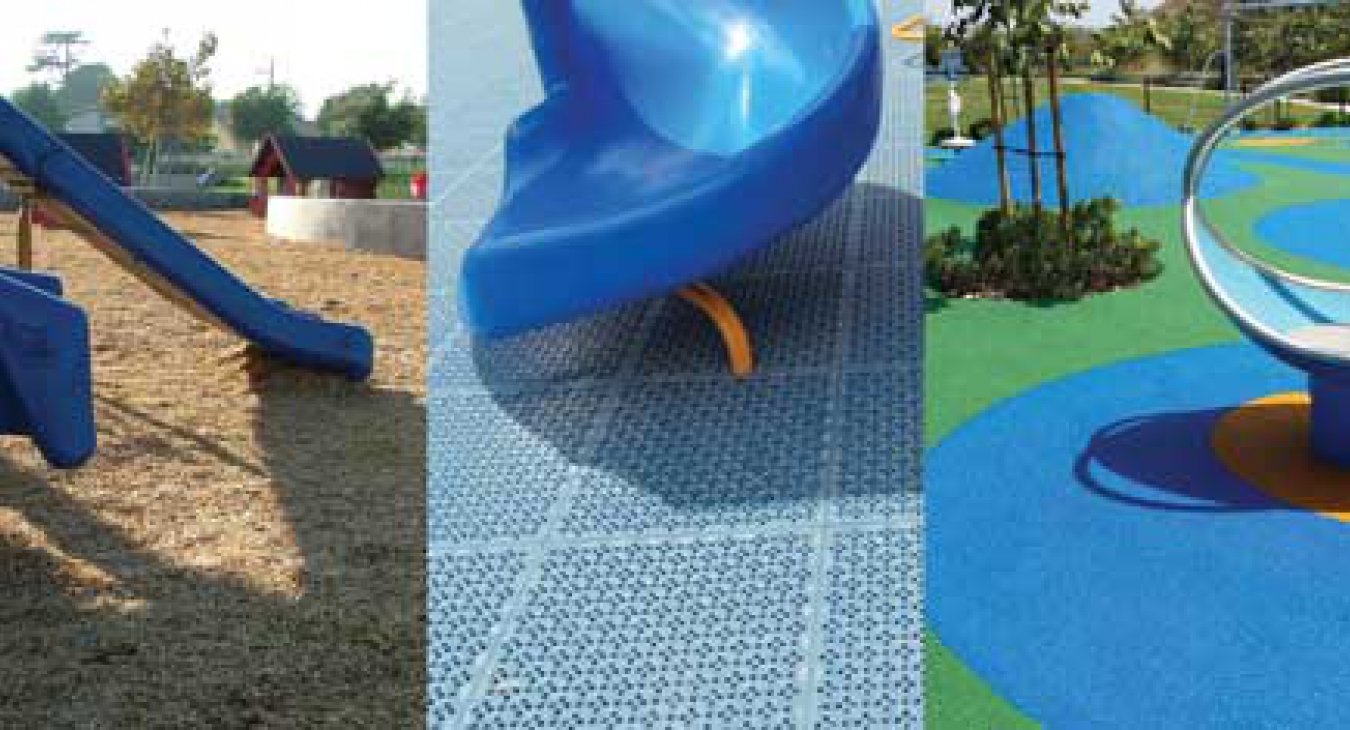


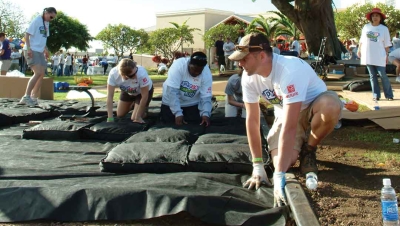



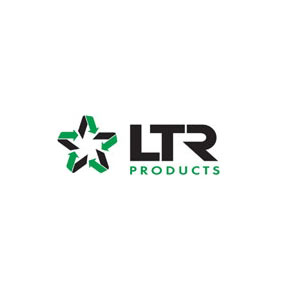


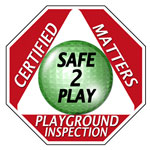
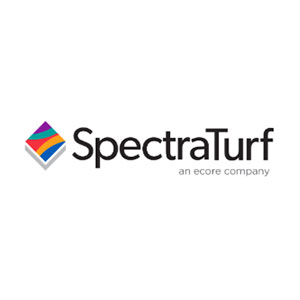


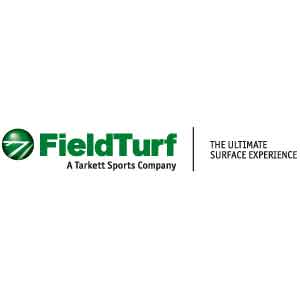

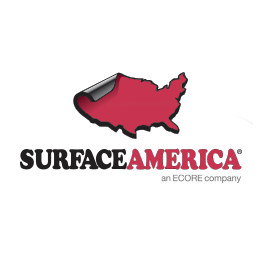
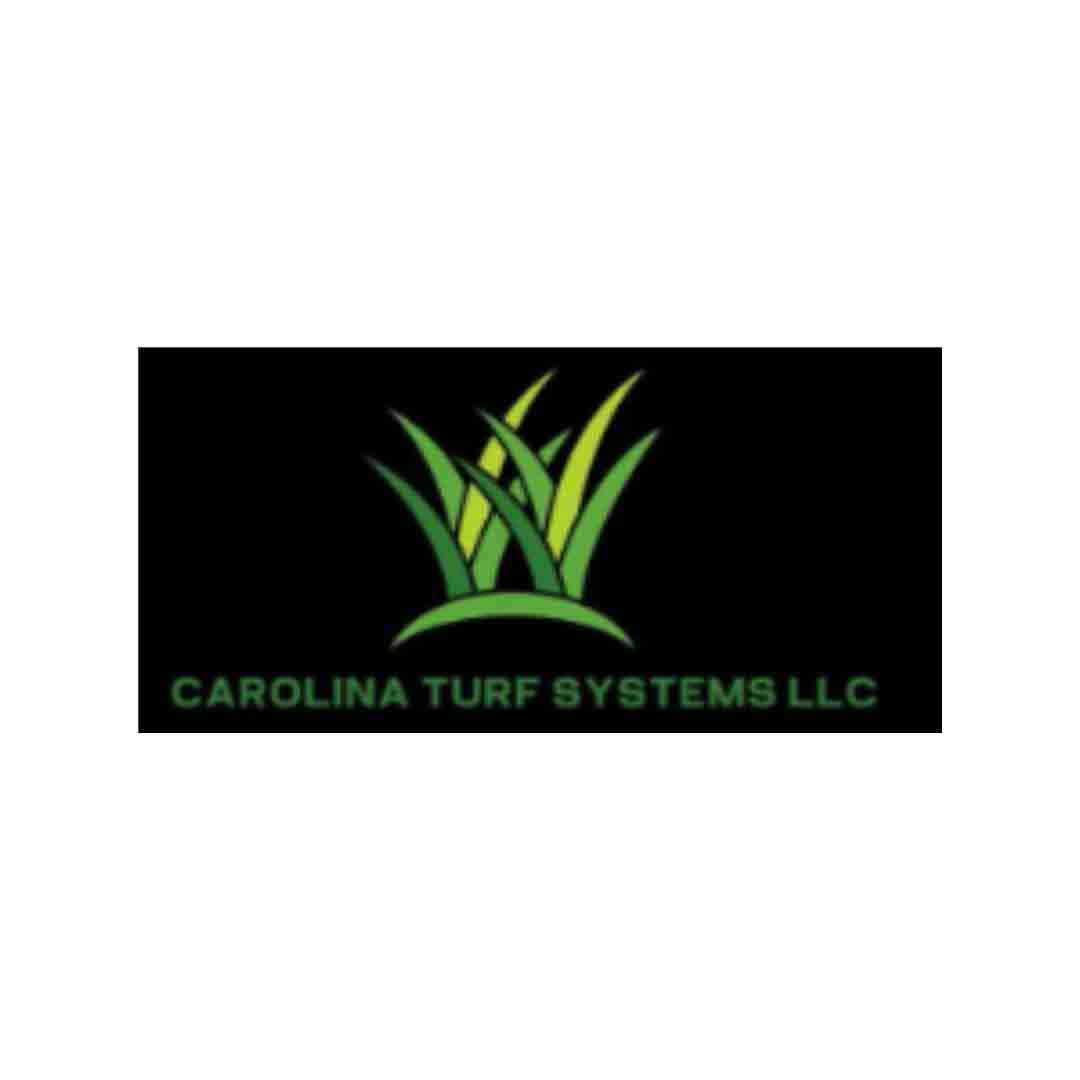
SAW DUST TYPE SURFACE FOR AN ACCESSIBLE PLAYGROUND
My city is touting a brand new (ribbon cutting 6/19/17) playground as the "first fully accessible playground" with standard equipment and a saw dust type surface. I consider this type of surface to be inappropriate and not usable by anyone, never mind a kid or their patent who uses a wheelchair.
Although wood chips and the like are on the list, do you consider this to be a violation of the ADA 2010 standards as it is a playground with only one above ground piece of equipment?
Thank You,
Ruthee
Quotes for Rubber Playground Surfacing
To Whom it May Concern,
I am looking for a quote on the installation of 4400 square feet of rubber surfacing for a community playground. The playground is a high-traffic area located in an urban environment. The playground is used during the school day by students from a local public and private school and it is used beyond school hours by the local recreation center. Any assistance you could provide in finding affordable pricing would be greatly appreciated. I can be reached via e-mai at [email protected] or on my cell at (401)871-3878.
Sincerely,
Wendy Randle, Director of Education
SouthSide Elementary Charter School
Add new comment